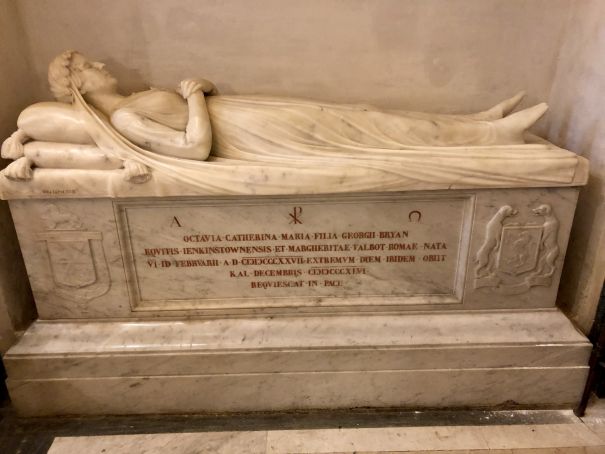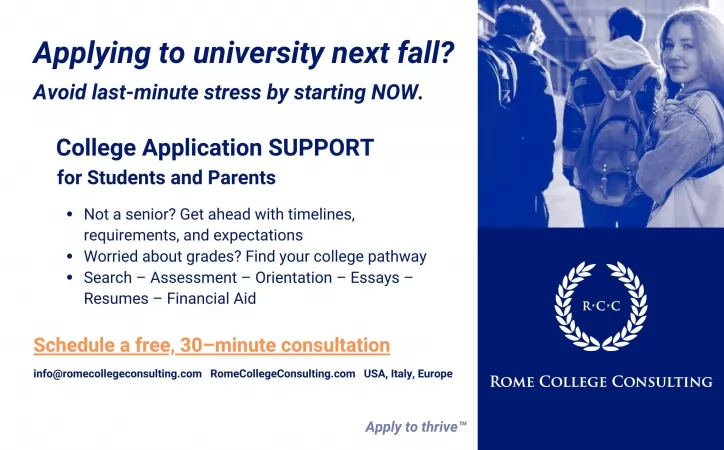John Henry Newman's first sermon in Rome, soon after he arrived to study for the priesthood in 1846, raised eyebrows among Catholics and Protestants alike.
John Henry Newman (1801-1890) ordained priest in the Church of England in 1825, was the leading spokesperson for the Anglican communion in the first half of the 19th century. His in-depth study of the church fathers, however, led him to become a Roman Catholic in 1845 and be ordained priest in 1847, much to the dismay of his fellow Anglicans and to the delight of Catholics.
Ahead of the canonisation of Blessed John Henry Newman on 13 October, it is opportune to recall that he preached his first sermon as a Roman Catholic in the Irish Franciscan Church of S. Isidoro in Rome. The future saint was received into the Roman Catholic church in Oxford on 9 October 1845.
While convinced of the validity of his Anglican orders, he felt it would be more prudent to remain as a Catholic layman, but Bishop Nicholas Wiseman, president of Oscott College, Birmingham, persuaded him to seek ordination to the Catholic priesthood. Accompanied by his friend and fellow convert Ambrose St John, Newman arrived in Rome at the end of October 1846 to study for the priesthood, taking up residence at the College of Propaganda near the Spanish Steps.
A tragic death
A tragic death that occurred in the Eternal City just over a month later provided the occasion for Newman’s first sermon. The circumstances were recorded by Francis Mahony, Roman correspondent for the Daily News, the UK newspaper founded by Charles Dickens.
Mahony’s report for 3 December 1846 reads as follows:
"I regret to find that, among other frivolities which occupy the leisure of the Palazzo Borghese, homoeopathy is now paramount, and through female influence this nonsense has become positively mischievous. Last March the duchess of Piombino was a victim, and this week a lovely daughter of Colonel Bryan, of Kilkenny, died under this treatment, none of the many English physicians resident here having been suffered to attend. She had arrived here a few weeks before in perfect health."
Octavia Bryan
The young lady in question was Octavia Catherine Mary Bryan, the fifth of six daughters of Colonel George Bryan of Jenkinstown, Co. Kilkenny and Margaret Talbot of Castle Talbot, Co. Wexford. George and Margaret spent much of their married life from the early 1820s on the continent, and Octavia Catherine Mary was born in Rome on 6 February 1827.
Her maternal aunt, Mary Theresa Talbot, was married to the Earl of Shrewsbury, one of England's leading Catholic peers, and her mother, renowned for her beauty and wit, was very much at home in Roman society, making friends with both Pius IX and Pauline Bonaparte. Octavia was betrothed to Prince Scipio Borghese, a scion of one of the noblest families of Rome. The wedding was due to take place on 4 December 1846, but just three days before her scheduled nuptials the young woman succumbed to a fever.
Mahony’s report added further details: "The solemn dirge and requiem held over the poor lady in the church of Irish Franciscans, St Isidoro, was attended by several hundred British visitors, besides the young lady’s kinsfolk, of the princely houses of Doria Pamphilj and Borghese. Towards the termination of the sorrowful ceremony, at a pause in the liturgy, there arose in the body of the church a person in ecclesiastical costume, of pensive and careworn aspect, who standing near the coffin, addressed himself to speak.
“His voice was low at first, so that few heard till it gradually filled the church, and it was understood to be a simple recital of the unostentatious virtues of the deceased; but soon came words of impressive import, and a whisper went round that the unexpected speaker on the occasion was the Rev Mr Newman, late of Oxford. To the thousands who have perused his printed sermons delivered in Anglican pulpits, it would be difficult to convey a notion of his manner on the present occasion, it being the first time that he delivered himself of an extemporaneous unpremeditated discourse. But as a letter to you is no proper vehicle for theological comments, I add no more.”
Prince Marcantonio Borghese
Poor Octavia’s obsequies were overshadowed by the fact that the preacher was none other than John Henry Newman. Prince Marcantonio Borghese, head of the Borghese family, approached Newman the night before the funeral and begged him to preach the following day. Marcantonio’s first wife, Gwendoline Talbot, who died from scarlet fever in 1840 at the tender age of 22, was known in Rome as the mother of the poor because of her prodigious charitable works on their behalf.
As Gwendoline was also a younger daughter of the Earl of Shrewsbury, Prince Borghese astutely emphasised the double Shrewsbury connection in his attempts to cajole the new convert. Furthermore, he thought that Newman could exploit the young lady’s sudden death to convince the number of English Protestants who would be present at the funeral of the necessity of becoming Catholics before it was too late.
Persistent prince
Horrified at the prince’s reasoning, Newman explained that as a student for the priesthood, he was not yet licensed to preach. Prince Borghese retorted that he had already gained the necessary permission from the Vatican. Newman then ventured that the Anglican style of reading a sermon would hold little appeal for an Italian audience. Despite the cleric’s best efforts to escape this difficult task, however, the prince remained obdurate, and eventually Newman had no option but to yield to Borghese’s persistence.
Ambrose St John, Newman’s close friend, gave further details of the sermon in a letter to J. B. Dalgairns, a mutual companion who also converted from Anglicanism and was ordained to the priesthood in 1846. After addressing the Catholics in the congregation, Newman turned his attention to the Protestants present, making the point that all that was lacking in the sterling Anglo-Saxon character was the Catholic faith:
“As you may guess, those who did like it liked it very much – such as the Princess Aldo Brandini, a half sister of Prince Borghese, who himself with others of his family could not follow the English. But the majority, including many old staging Catholics, who brought Protestant friends to hear the music, were disgusted to see their friends whipped before their faces. And still more the Protestants who heard the account from their brother Protestants (whose sole idea seems to be that Newman has called them all brutes and dogs &c. &c) became quite rabid; and the disease, propagated at balls and parties, has spread among Protestants and partly even amongst Catholics to an amazing extent."
Newman's diary
Newman just recorded the fact that he gave this sermon in his diary for 4 December 1846, but he was much more explicit in a letter to Dalgairns four days later: "Last Friday I had a few hours notice to preach extempore a funeral sermon on a young Irish lady here, a niece of Lady Shrewsbury’s at St. Isidore’s the Irish Franciscan Church. I assure you, I did not like it at all."
He was even more forthcoming in a letter addressed to Mrs J. W. Bowden 13 January 1847: "An occurrence happened which I do not know how to be sorry for, nor can blame myself about, which has been somewhat untoward. A young Catholic lady here died suddenly, a near relative of Lord Shrewsbury, and the Prince Borghese came to me one night and asked me earnestly to preach her funeral sermon next day . . . that, considering she was Lord Shrewsbury’s niece, I thought I could not graciously deny him. You may think how great a trouble it was to me to preach ex tempore, when I had been at Rome hardly a month, at a few hours’ notice, upon the death of lady of whom I knew nothing. Well, I gained no thanks from the relatives of Catholics, and much ill will from Protestants and many Catholics too.
“Prince B[orghese] had wished me to try to do some good to the Protestants present, – and I preached the sermon in my own way, which was quite a novelty, and not a pleasing one, here. The Catholics who are used to the fluency of the Italians did not understand my manner, and the Protestants, who came for the music or from respect to the family, did not relish receiving a lecture. And when they want away and told others, the story was made worse and anger excited greater, on each successive tradition. At length the Protestant world got into a regular fury, and Miss Ryder heard a man express the sentiment in a party, that I ought to be thrown into the Tyber."
Pope Pius IX
Reports of the debacle soon reached the ears of the pope himself. Having expressed the desire to see Newman repeatedly after his first encounter with him in Rome, Pius IX now temporarily lost all desire to have anything to do with him. While the brouhaha kindled by Newman’s sermon tended to overshadow the tragic death of young Octavia, the poignancy of the occasion was well captured by her funeral monument, sculpted by Vincenzo Gajassi in 1848, and occupying of the top left-hand corner of St Isidore’s.

One of the foremost sculptors of his age, Gajassi’s work depicted the supine figure of a young woman on a sarcophagus. Her veiled head, crowned with a garland of roses, reposes on two cushions. With the veil and crown of roses implying the notion of a bridal dress, the whole scene conveys an Ophelia-like impression that arouses the sympathy of visitors to St Isidore’s even to this day.
While Gajassi’s monument remains a fitting tribute to the untimely demise of the young Irishwoman on the eve of her nuptials, Newman’s faltering words were totally inadequate for the occasion. Perhaps it is just as well that his sermon has not survived. Both as an Anglican and as a Catholic, the Englishman was no stranger to controversy. Although not deliberately courting hostility, the polemics occasioned by his writings stemmed rather from his searing honesty and fidelity to conscience. The affray occasioned by his debut sermon in S. Isidoro, however, was of a totally different kind and not of Newman’s volition.
None of those present at Octavia’s obsequies could have harboured the faintest suspicion that the preacher would one day be raised to the ranks of canonised saints.
Mícheál MacCraith
Fr Mícheál MacCraith OFM is the former Guardian of St Isidore's College on Via degli Artisti 18.
This article was published in the October 2019 edition of Wanted in Rome magazine. Cover image: Portrait of Cardinal Newman by Sir John Everett Millais.
General Info
View on Map
St John Henry Newman and St Isidore's Rome
Via degli Artisti, 41, 00187 Roma RM, Italy


















